
Treasures of Nature: Dominican Republic Info & Sightseeing of Nature
Treasures of Nature:
Dominican Republic Info & Sightseeing of Nature
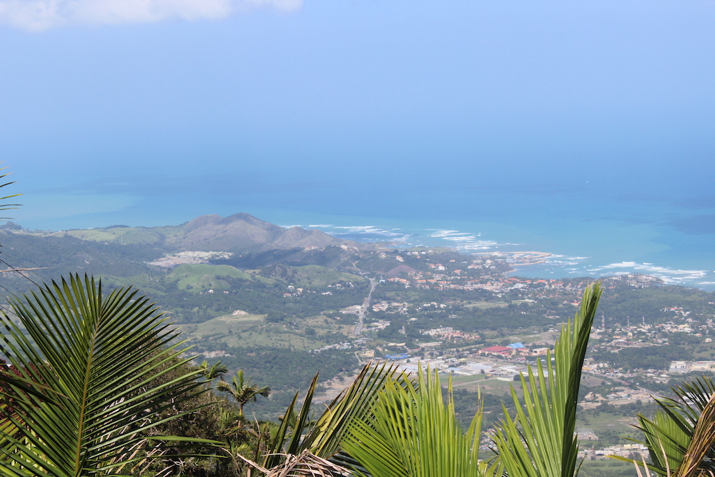
4 Fun Facts
1. In 1993, Jurassic Park was filmed by the Chavon River, close by La Romana. It’s not every day that you get a chance to walk in the footsteps of a Tyrannosaurus Rex.
2. The Dominican Republic is the only place in which you can find Larimar, a light blue gem stone.
3. There is magnetic poles in Barahona and Jamao!
4. A plant grows here called Mazanillo, with its extraction, it is said it can be a form of cancer treatment (Eoteinascidina-743)
Nature on the North Coast of the Dominican Republic
Before being named Hispaniola, the explorer Christopher Columbus called it a “wonder of nature” over five hundred years ago. We believe Christopher Columbus’ job of being a sailor suited best, for his excellent eye sight.
The entire island of the Dominican Republic is absolutely fascinating, but the North Coast being so natural is a whole other level of special. No matter what place you visit on the North Coast you will see greenery around you, and it’s not green, but will see yellows, oranges, pinks, purples, reds of the different exotic flowers, or the sweet fruits & vegetation. All of our lush vegetation grows like wheat’s around here. The soil and the temperature makes it easy for them to grow. Wherever your home is located on the North Coast, you will definitely have a palm tree in your backyard or extremely close to your property.
When you take long road trips around the island, you’ll be surprised at how much different landscapes you see, from wavy mountain ranges to Turquoise Ocean or to tender champagne-colored sand. All the way from Monte Cristi to the tip of the peninsula in Samana …In the South you can even see a dessert, located in Bani.
Coast Line
The north coast of the Dominican Republic is known by three names:
Green, Amber & Silver Coasts: Green for the lush flora & fauna along the entire coast, Amber for the rich amber deposits that flush out with the rivers, and Silver for the name Christopher Columbus originally gave to Puerto Plata, from the plant (Peperomia Caperata Variegate) it’s reflection in silver made him think there was treasure or gold to find. In the end, he did find it, maybe not a treasure chest, but a land of full of green gold, and where he landed had the most wealth of it all.
Flora
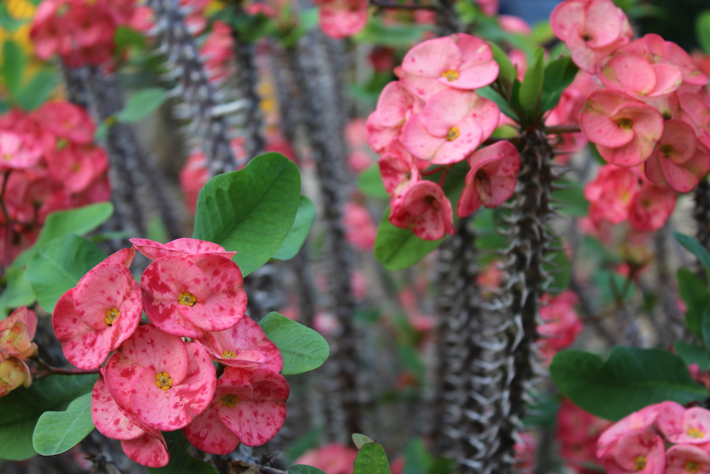
Vibrant vegetation provides the backdrop to any nature adventure you undertake. The Dominican Republic has approximately 5,600 plant species, 1800 of which are flower species, like Flor de Caoba (national flower), Bayahibe Rose, Trinitaria, Coralilo. You can find 300 varieties of just orchids.
Depending on the area, there are poinsettias, royal palms, mangroves, rosewood, pines, oak, pine, mahogany and cedars. Some grow in tropical temperatures and some are better off in the cooler climate of Constanza or Jarabacoa.
Jamao Mahogany
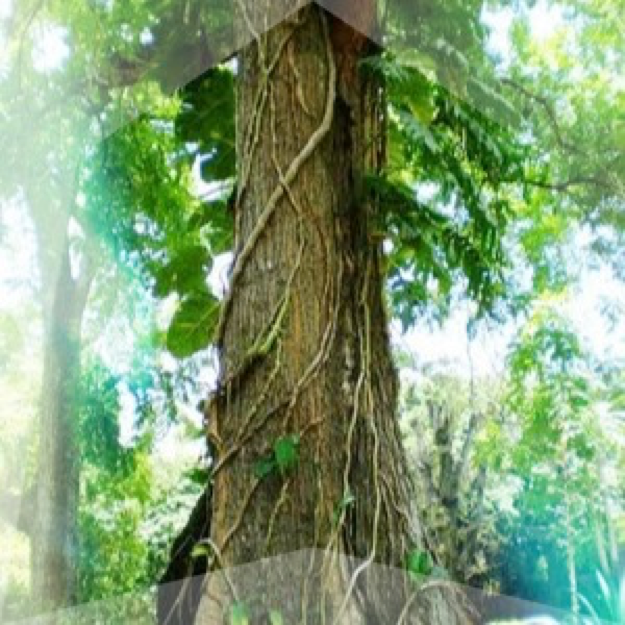
Many tropical fruits are possible to find such as mangos, passion fruits, banana, noni, limoncillo, cashew, guanabana. Vegetables include tomato, beets, beans, yucca, herbs, onions, cabagge, chinese bitter melon and so much more.
Fauna
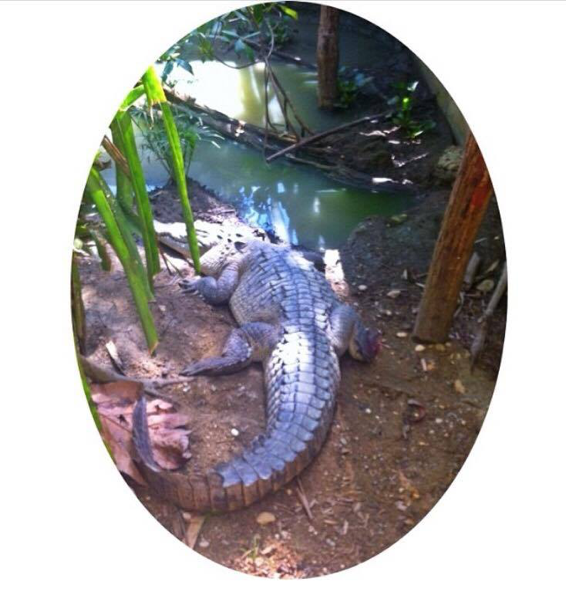
Rugama Tours, Islabon
The Dominican Republic has a wide variety of animal species. Mammals endemic to the island are: bats, bottlenose dolphin, Antillean manatee (Trichechus Manatus), Solenodon, Hutia, & Humpback whales.
There are approximately 300 kinds of birds on the island, some native and some migratory. The national bird of the country is the Palm Chat. Some of the native birds are: Hispaniolan parrot, Hispaniolan Parakeet, Woodpecker. A few of the aquatic birds are: flamingos, blue heron, great egret, American frigate, brown pelicans, glossy ibis…
Amphibians and Reptiles are also to be found, such as, Rhinoceros Iguana, Turtles, Loggerhead, Hawksbill, and the American Crocodile.
In 2008, two leatherback turtles laid eggs on the beach in Cabarete, the Ministry of Environment and Natural Resources kept them protected with a net fence and an unusual task for the Politur, who usually are the tourist Police, although the turtles were just visiting as well.
Sea Turtles can be found in many places on the North shore like Sosua, Boca del Yasica, Las Terrenas, Cabo Samana, and Maimon, like the leatherback turtles when they lay eggs along the shore they are the Ministry of Environment and Natural Resources protects them.
Species of fish that live in the salt water are, bluefish, tuna, mackerel, marlin, swordfish, sea bass, barracuda and many more.
Beaches
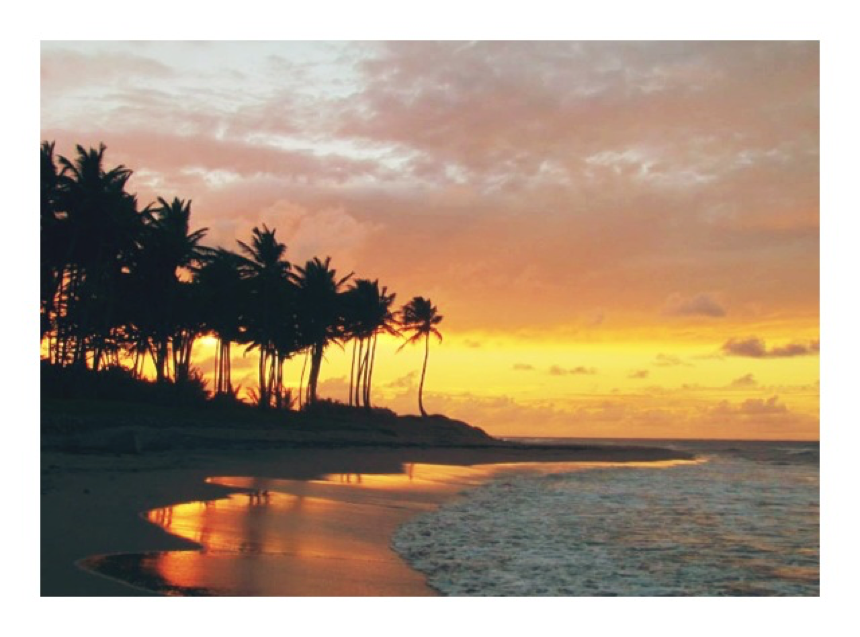 Surf beach playa Encuentro
Surf beach playa Encuentro
-Most popular beaches on the North Coast: Dorada, Sosua Bay, Santa/Alicia, Encuentro, Cabarete Bay, Punta Rucia, Fronton, Grande, Magante, Calenton, Diamante, Rincon, Bonita, Preciosa, El Morro, El Valle.
In 2003, a nature turn-around happened in Sosua. A small inlet close to Sosua Bay was covered with water from the ocean and began to accumulate white sand. This has given tourists & locals a thrill to add a new beach right in town. It’s now a new beauty called Playa Alicia, and some Dominicans name it Playa Santa after Saint because it happened to be a miracle. Normally, people think of erosion taking away beaches, but nature also builds new ones.
Along the beaches of North Coast, while interesting shells can be found, the most exciting find is amber. After storms, the amber gets washed out to sea in the rivers when it rains, and is brought back with the waves.
Sightseeing Elsewhere: Bahia de las Aguilas, Bahoruco, Macao, Punta Salinas, Bavaro, Boca Chica, Eagle Bay Beach, Palmar de Ocoa, Canto, San Raphael and many more..
Caves/Cuevas
-Cuevas de Cabarete y Goleta
-Cueva de las Golondrinas: Laguna Grigri
-Walk in & Dive Caves in Laguna Dudu
-Los Haitises, “San Gabriel”, “Linea cave”, “La Arena”
-Los Indios-Nagua
-El Coco Negro-Samana
-El Arbol & Pantano & Cueva de Games-Cabrera
-“San Franciso” one of the largest, in San Francisco de Macoris
Sightseeing Elsewhere: Los Tres Ojos & Cueva de las Maravillas
Islands
-Cayo Arena: Punta Rucia
-Cayo Paraiso: Puerto Plata
-Cayo Levantado: Samana
Sightseeing Elsewhere: Isla Saona, Beata & Catalina out on the ocean and Cabritos Island in center of Lake Enriquillo
Lakes & Lagoons
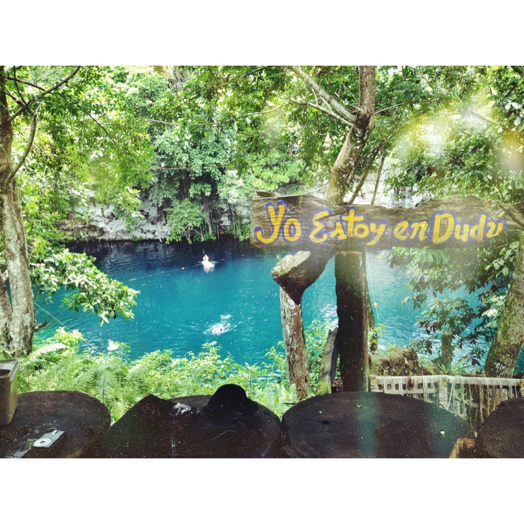
Laguna Dudu
-Lagunas (Lagoons): Dudu, Grigri, Cabarete, Azul, Redonda, Limon
Sightseeing Elsewhere: Lago Enriquillo, is the most popular landlocked hypersaline lake, in the South West. You’ll find the American Crocodile, it is well established that it represents one of the largest wildlife crocodile population in the world. Other lagoons to see are Laguna Salada & Azul & Oviedo..
Mountains
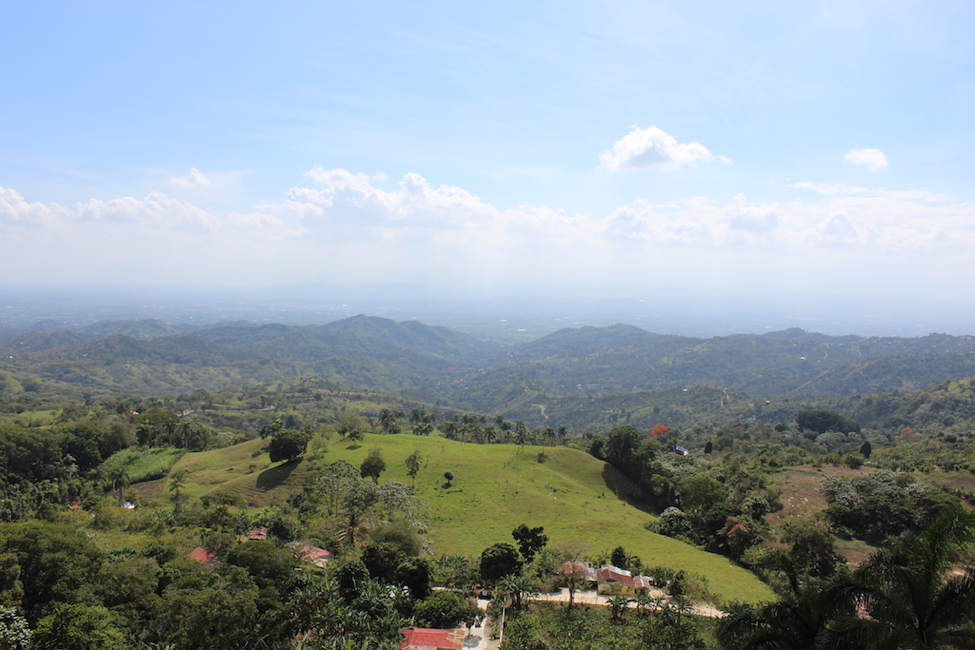
View from El Molino Restaurant in Moca
Also, our mountains set us apart — this is a big Caribbean country, and driving to one mountainous area or another, many reachable on day trips, never gets old.
-El Morro: Monte Cristi
-Isabella De la Torres: Puerto Plata
-Guaconejo Hills: Nagua
-Loma de Cabrera
– Sierra de Samaná
-Sereno de la Montana: Moca
– Maria Trinidad Sanchez-Cabrera
Sightseeing Elsewhere: Cordillera Septentrional, including La Pelona(3094meters), La Rucilla(3049m), Pico Yaque(2760m), and the largest mountain of the whole Caribbean: Pico Duarte(3098m)
Museums focused on Nature
-Amber Museum Puerto Plata
-Sea Salt Ponds: Monte Cristi, where salt is made
-Brugal Rum Factory, sugar cane grown all over the Puerto Plata region. The process of turning sugar cane into rum, while natural only in the beginning state is worth watching.
-Choco & Larimar & Archaelogical Museums
Natural Parks & Rainforests
The best examples of Rain Forests have been made into Natural Parks.
(Most popular Natural Parks)
Other examples:
-Acuario Natural Kaio: Las Galeras Samana
-Emerald Coast: Rio San Juan, Laguna Dudu & Grigi, Cabo Frances, Calenton Beach, and Sanctuary for indigenous & migratory birds.
-Guaconejo Rainforest & Cacao Plantation Tour: San Francisco de Macoris
-Islabon Jungle River: mini zoo, boat ride on the river, just behind Cabarete
-Quita Espuela : San Franciso de Macoris
Sightseeing Elsewhere: Ebano Verde Cloudforest Constanza, Rio Blanco Rainforest Bonao, Bird watching Rainforest Sierra de Bahoruco,
Oceans
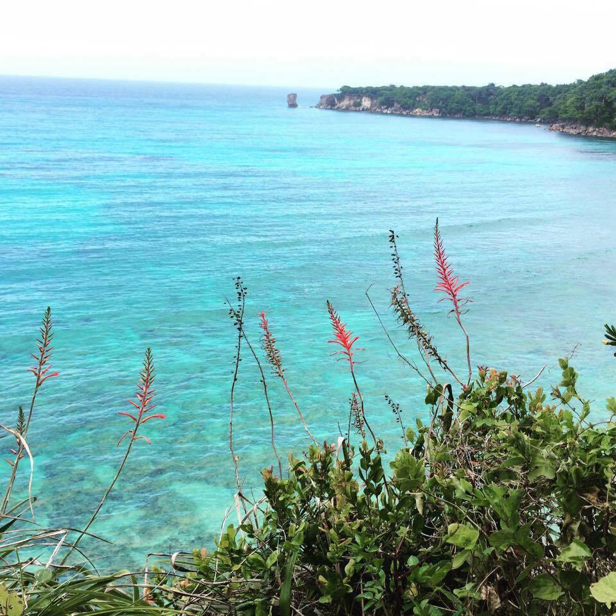
In the North Coast we have the Atlantic Ocean, and in the South we have the Caribbean Sea. Diving in Sosua and Puerto Plata generally is an underwater photographer’s dream, with so many beautiful sea lives you can see. Some divers even expose the dream to others like Bill Passmore, the owner of Sosua diving, has photography exhibitions of his underwater ocean adventure. Most coral reefs of the Dominican Republic are fringing reefs (when you go snorkeling just off the shore, are always connecting to mainland but can extend out quite far), also two barrier reefs, numerous patch reefs, and four large offshore banks.
-Dive with humpback whales & dolphins
-Dive to coral heads/reefs/canyons/caves/natural & artificial shipwrecks (some dating back to the 16 century)
Rivers
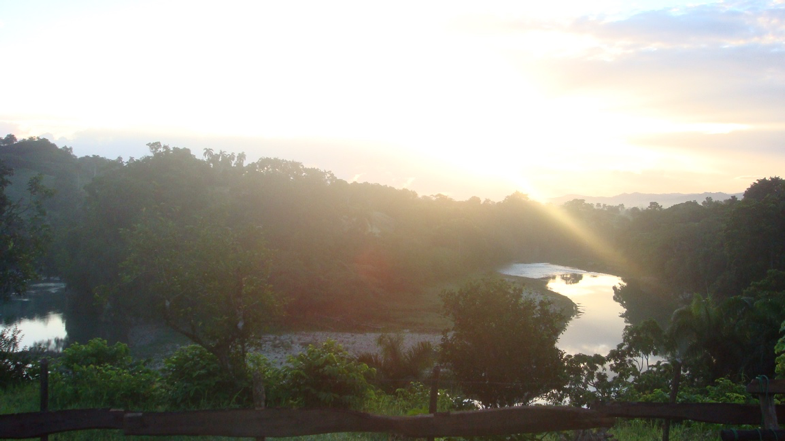
-Yaque del Norte (largest river of DR), connected with the Mao River
-Dajabon River
-Yuna River
Sanctuaries
-The Silver Bank Sanctuary: Protection of the Humpback whales in Samana
-Cayo Arena Marine Sancturary: Punta Rusia
-Monte Cristi Manatee Sanctuary
– Emerald Coast: Rio San Juan, protection of indigenous & migratory birds
-Monkey Jungle Sanctuary: Capuchin & Squirrel Monkeys, El Choco Sosua
Sightseeing Elsewhere: Oviedo Lagoon wildlife sanctuary
Waterfalls
Salto Limon Samana
-El limon & Lulu: Samana
-The most popular, 27 Waterfalls of Damajagua: Puerto Plata. No one needs a waterpark if you have this, it’s like 27 jumping boards & water slides, each different than the other, no need for a towel to dry up
-El Saltadero: Cabrera
-Ciguapa Falls: Puerto Plata
-Arroyo Blanco, Partido, Grande: Jamao
-Cascada Ojo de Agua: Gaspar Hernandez
Sightseeing Elsewhere: Salto de Jimenoa & Baiguate Salto Jarabacoa, Jima Bonao
Eco Adventures: Do it yourself
On the North Coast you have a lot of options of where to and what do and how to do it. The adventure lies in your hands.
Hiking, Rafting, Mountain Biking, Catamaran, Snorkeling, Diving, Surfing, Safari, and so much more!
